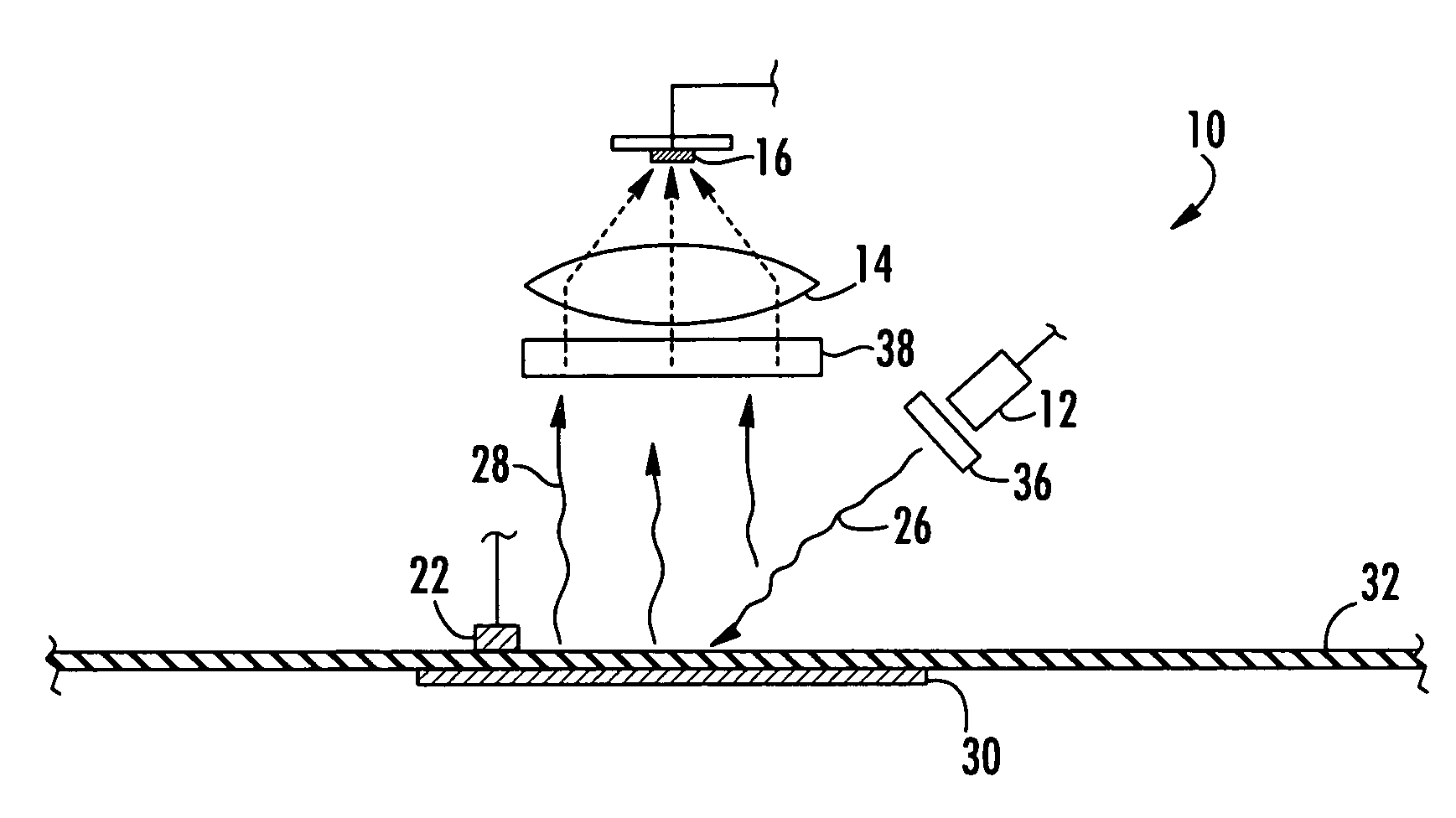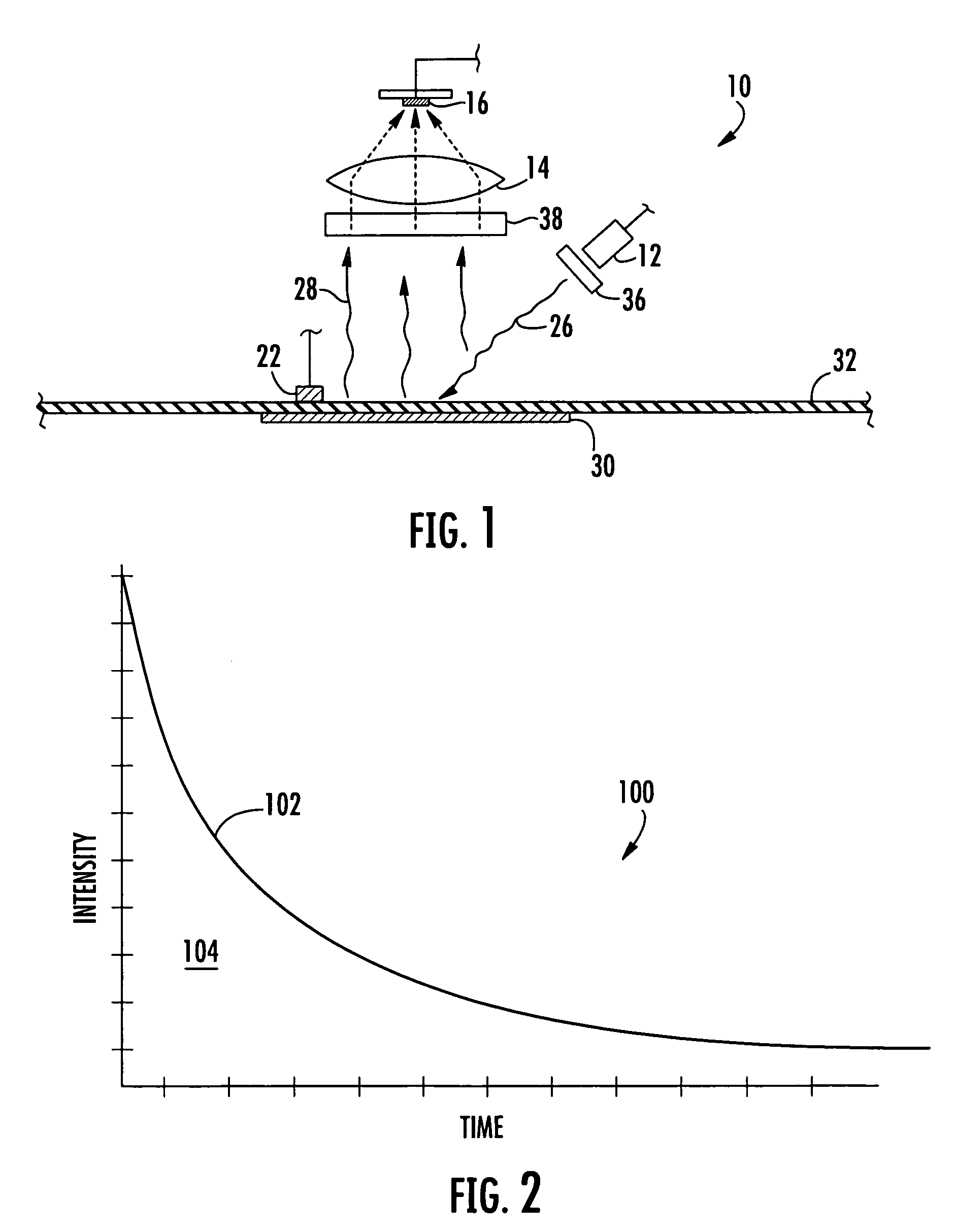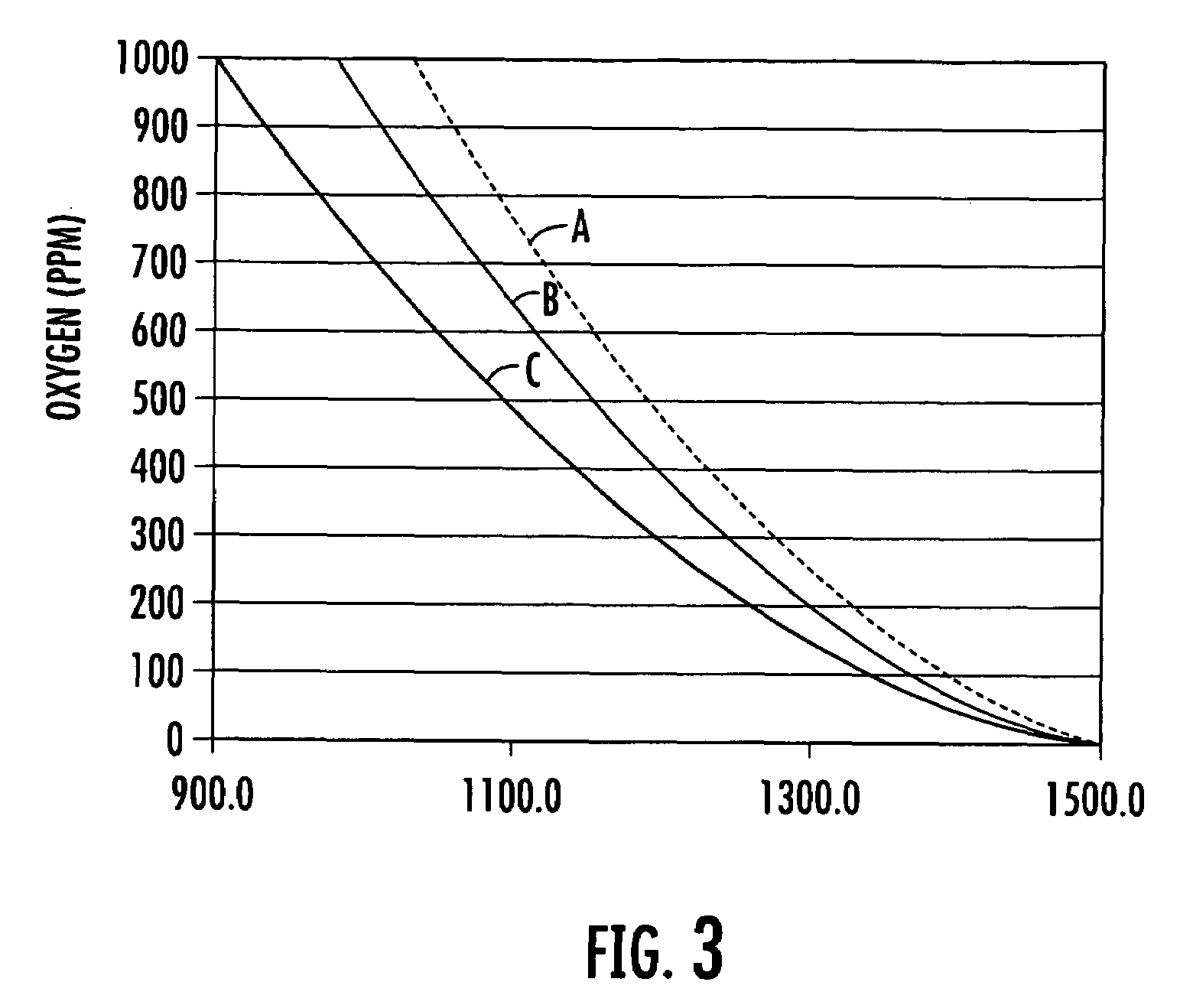Method and apparatus for measuring oxygen concentration
a technology of oxygen concentration and measurement method, applied in the direction of fluid tightness measurement, instruments, fluorescence/phosphorescence, etc., can solve the problems of insufficient triggering conditions, oxygen scavengers not always activating on command, and many other problems, to achieve the effect of improving the accuracy of oxygen concentration calculation, improving temperature measurement accuracy, and easy manipulation and positioning
- Summary
- Abstract
- Description
- Claims
- Application Information
AI Technical Summary
Benefits of technology
Problems solved by technology
Method used
Image
Examples
examples
[0124]The following examples are provided for illustrative purposes only and should not be construed as limiting the invention.
[0125]In the following examples a palladium porphyrin was placed into a temperature controlled chamber through which a stream of gas having a known oxygen concentration was introduced into the chamber. The chamber included a window onto which an apparatus in accordance with the invention was placed in an oxygen and temperature monitoring relationship with the porphyrin. The porphyrin was exposed to a light at a peak wavelength around 380 nanometers. The luminescence of the excited porphyrin was measured over a period of time ranging between 0 and 8,000 μs to produce an exponential decay. For each measurement the excitation and luminescence cycle of the porphyrin was repeated 1000 times. The baseline signal was determined at a time that is about 5,000 tau. The resulting cycles were averaged from which tau was calculated. Temperature was determined with a RTD ...
PUM
| Property | Measurement | Unit |
|---|---|---|
| temperatures | aaaaa | aaaaa |
| temperature | aaaaa | aaaaa |
| temperature | aaaaa | aaaaa |
Abstract
Description
Claims
Application Information
 Login to View More
Login to View More - R&D
- Intellectual Property
- Life Sciences
- Materials
- Tech Scout
- Unparalleled Data Quality
- Higher Quality Content
- 60% Fewer Hallucinations
Browse by: Latest US Patents, China's latest patents, Technical Efficacy Thesaurus, Application Domain, Technology Topic, Popular Technical Reports.
© 2025 PatSnap. All rights reserved.Legal|Privacy policy|Modern Slavery Act Transparency Statement|Sitemap|About US| Contact US: help@patsnap.com



